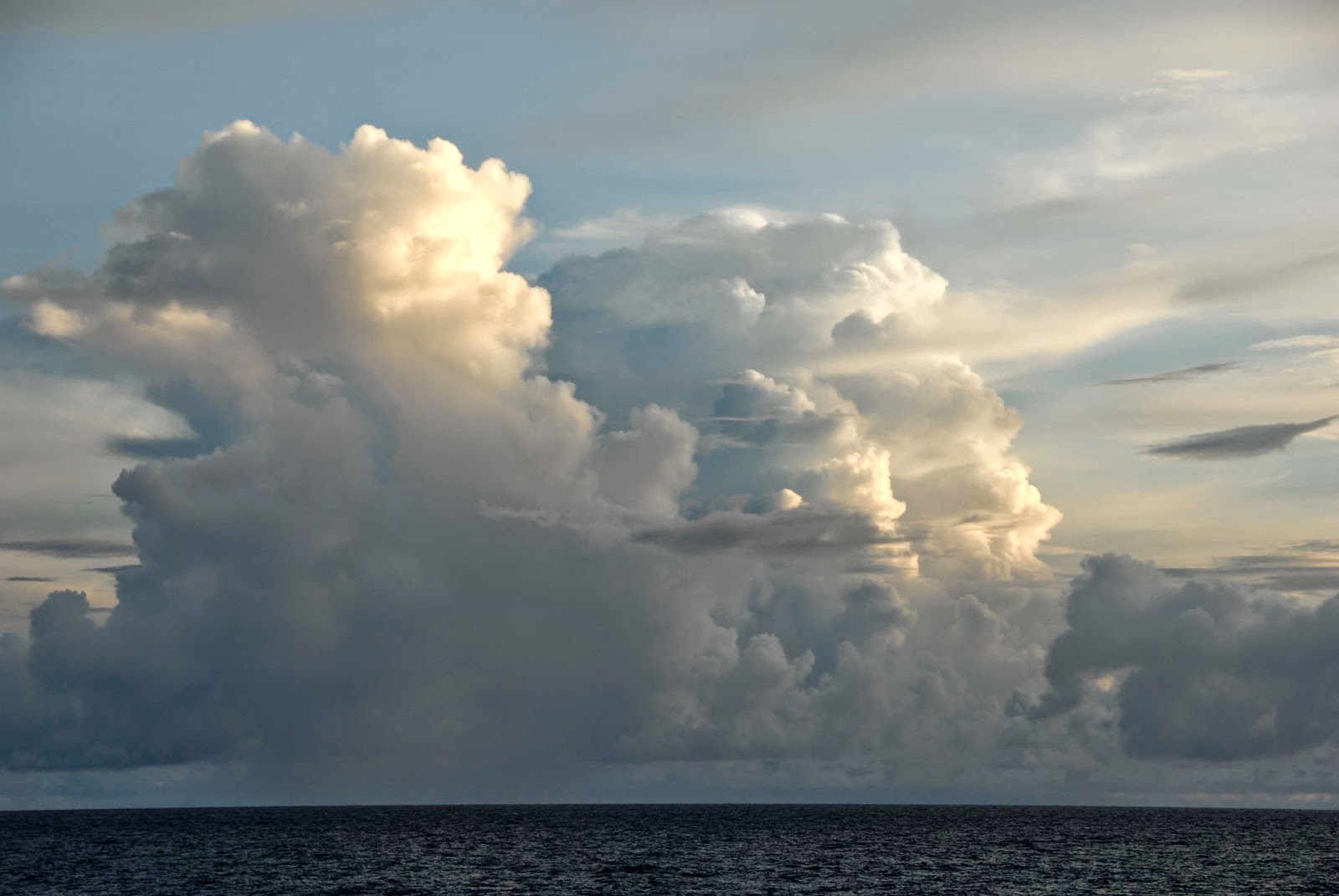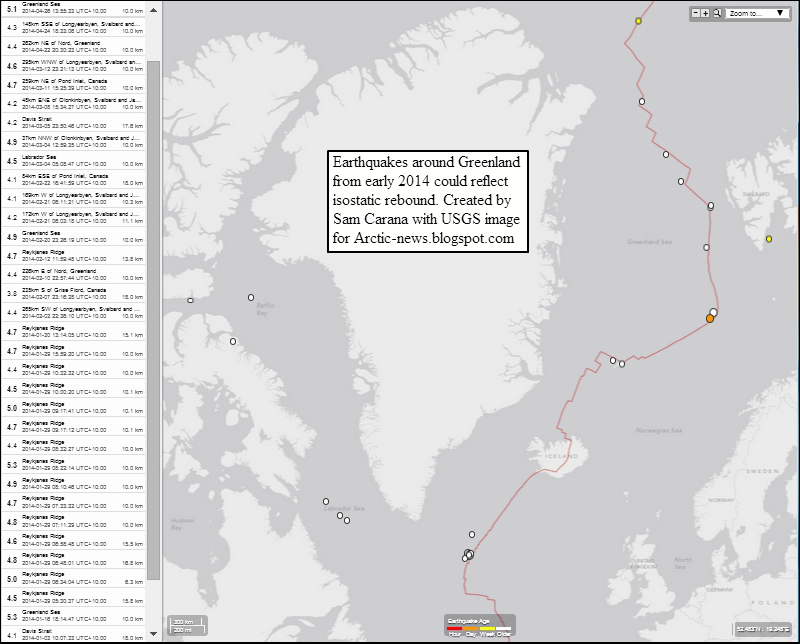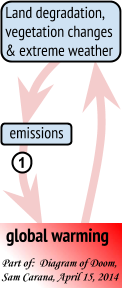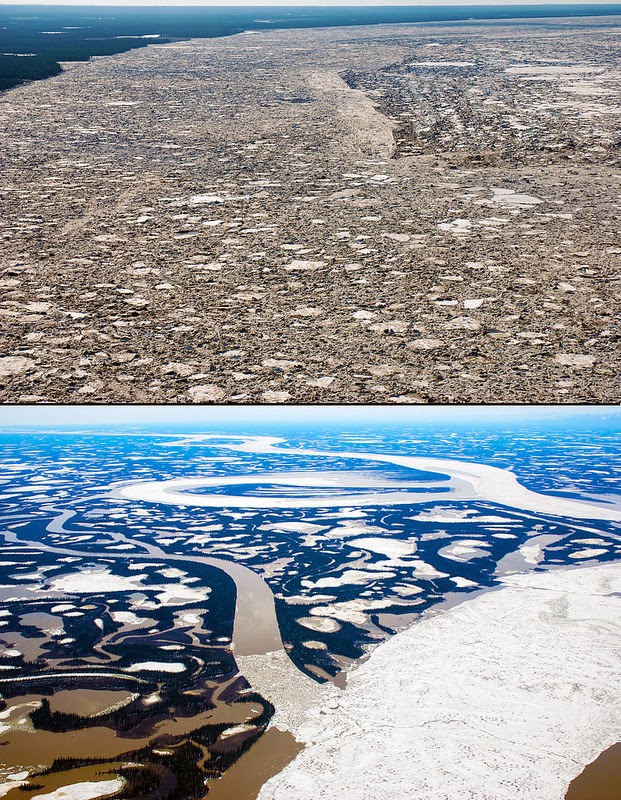Recent research results show that an atmospheric hole over the tropical West Pacific is reinforcing ozone depletion in the polar regions and could have a significant influence on the climate of the Earth.
 |
In tropical thunderstorms over the West Pacific air masses and
the chemical substances they contain are quickly hurled upward
to the edge of the stratosphere. If there are sufficient OH
molecules in the atmosphere, the air is extensively cleaned by
chemical transformation processes. Where OH concentrations are
low, such as those now found in large sections of the tropical
West Pacific, the cleaning capacity of the atmosphere is reduced.
Photo: Markus Rex, Alfred Wegener Institute |
At first Dr. Markus Rex suspected a series of flawed measurements. In October 2009 the atmospheric physicist from the Alfred Wegener Institute, Helmholtz Centre for Polar and Marine Research (AWI) was on board the German research vessel “Sonne” to measure trace substances in the atmosphere in the tropical West Pacific.
Tried and tested a thousand times over, the ozone probes he sent up into the tropical sky with a research balloon every 400 kilometres reported – nothing.
Or to be more accurate: almost nothing. The ozone concentrations in his measurements remained nearly constantly below the detection limit of approx. 10 ppbv
* in the entire vertical range from the surface of the Earth to an altitude of around 15 kilometres. Normally ozone concentrations in this part of the atmosphere are three to ten times higher.
Although low values at an altitude of around 15 kilometres were known from earlier measurements in the peripheral area of the tropical West Pacific, the complete absence of ozone at all heights was surprising. However, after a short period of doubt and various tests of the instruments it dawned on the worldwide recognised ozone specialist that he might be onto a phenomenon yet unknown to science. A few research years later and after the involvement of other colleagues came confirmation: Markus Rex and his team on board the “Sonne” had tracked down a giant natural hole over the tropical South Seas, situated in a special layer of the lower atmosphere known as the “OH shield”. The research results on the newly discovered OH minimum will be published soon in the journal “Atmospheric Chemistry and Physics”, with the Institute of Environmental Physics of the University of Bremen and other international research institutions as partners.
 |
Nearly all chemical substances produced by people, animals,
plants, algae or microorganisms on the ground or in the oceans
react quickly with OH and break down in this process. During this
chemical self-cleaning process substances that are not easily
water-soluble are transformed into water-soluble products and
then washed out by precipitation. Through this mechanism OH
molecules remove most substances from the atmosphere.
The OH molecule is therefore also called the detergent of the
atmosphere. Only extremely long-lived chemical compounds,
such as methane or CFCs, also known as "ozone killers", can
rise through the OH shield into the stratosphere.
Graphics: Markus Rex, Alfred Wegener Institute |
“Even though the sky appears to be an extensively uniform space for most people, it is composed of chemically and physically very different layers,” Markus Rex explains the complex makeup of the atmosphere.
The air layers near the ground contain hundreds or even thousands of chemical compounds. This is why winter and spring, mountains and sea, city and forests all have a distinct smell. The great majority of these substances are broken down into water-soluble compounds in the lower kilometres of the atmosphere and are subsequently washed out by rain.
Since these processes require the presence of a certain chemical substance, the so called hydroxyl (=OH) radical, this part of the atmosphere is called the “OH shield”. It acts like a huge atmospheric washing machine in which OH is the detergent.
The OH shield is part of the troposphere, as the lower part of the atmosphere is called. “Only a few, extremely long-lived compounds manage to make their way through the OH shield,” says Rex, “then they also get through the tropopause and enter the stratosphere.” Tropopause refers to the boundary layer between the troposphere and the next atmospheric layer above it, the stratosphere. Particularly substances that enter the stratosphere unfold a global impact. The reason for this is that once they have reached the stratosphere, their degradation products remain up there for many years and spread over the entire globe.
Extremely long-lived chemical compounds find their way to the stratosphere, even where the OH shield is intact. These include methane, nitrous oxide (“laughing gas”), halons, methyl bromide and chlorofluorocarbons (CFCs), which are notorious as “ozone killers” because they play a major role in ozone depletion in the polar regions.
 |
Location and extent of low ozone concentrations and thus
of the OH hole over the West Pacific. Fig. (a) shows the
region of origin of the air in the stratosphere, Fig. (b) ozone
sonde measurements (dots) and satellite measurements
(coloured map) of the total amount of ozone in the
tropospheric column of air and Fig. (c) the total amount of
OH in the tropospheric column of air calculated with a model.
Graphics: Markus Rex, Alfred Wegener Institute. |
After many years of research scientists now understand the complicated process of stratospheric ozone depletion very well.
“Nevertheless measured ozone depletion rates were often quite a bit larger than theoretically calculated in our models,” Markus Rex points out a long unsolved problem of atmospheric research.
“Through the discovery of the OH hole over the tropical West Pacific we have now presumably made a contribution to solving this puzzle.”
And at the same time discovered a phenomenon that raises a number of new questions for climate policy.
Researchers are now tackling these questions in a new research project funded by the EU with around 9 million euros, i.e. “StratoClim”, which is coordinated by the Alfred Wegener Institute. Within this project a new monitoring station will be established in the tropical Westpacific, together with the Institute of Environmental Physics at the University of Bremen.
“We have to realise,” reminds the Potsdam atmospheric physicist, “that chemical compounds which enter the stratosphere always have a global impact.” Thanks to the OH hole that the researchers discovered over the tropical Pacific, greater amounts of brominated hydrocarbons can reach the stratosphere than in other parts of the world. Although their ascent takes place over the tropical West Pacific, these compounds amplify ozone depletion in the polar regions. Since scientists identified this phenomenon and took it into account in the modelling of stratospheric ozone depletion, their models have corresponded excellently with the actually measured data.
However, it is not only brominated hydrocarbons that enter the stratosphere over the tropical West Pacific. “You can imagine this region as a giant elevator to the stratosphere,” states Markus Rex using an apt comparison. Other substances, too, rise here to a yet unknown extent while they are intercepted to a larger extent in the OH shield elsewhere on the globe. One example is sulphur dioxide, which has a significant impact on the climate.
Sulphur particles in the stratosphere reflect sunlight and therefore act antagonistically to atmospheric greenhouse gases like CO2, which capture the heat of the sun on the Earth. To put it simply, whereas greenhouse gases in the atmosphere heat the globe, sulphur particles in the stratosphere have a cooling effect. “South East Asia is developing rapidly in economic terms,” Markus Rex explains a problem given little attention to date. “Contrary to most industrial nations, however, little has been invested in filter technology up to now. That is why sulphur dioxide emissions are increasing substantially in this region at present.”
 |
This is how air reaches the stratosphere. Through the rapid
upward transport in tropical thunderstorms they reach an area
of slow large-scale ascent and rise from there through the
tropopause into the stratosphere over the course of weeks.
This process is most pronounced during northern hemispheric
winter. Model calculations show that, during this season, this
process mainly takes place over the tropical West Pacific. Due
to the formation of cirrus (= ice) clouds in the extremely cold
tropical tropopause, a large portion of the water-soluble
chemical substances is removed from the air and cannot reach
the stratosphere. OH molecules transform water-insoluble into
water-soluble compounds. Hence, if the concentration of OH
molecules along the dotted transport pathways shown above
is high only few chemical compounds make it into the
stratosphere. Conversely, the lower the OH concentration is
along the transport pathways, the more chemical
compounds enter the stratosphere.
Graphics: Yves Nowak, Alfred Wegener Institute. |
If one takes into account that sulphur dioxide may also reach the stratosphere via the OH hole over the tropical West Pacific, it quickly becomes obvious that the atmospheric elevator over the South Seas not only boosts ozone depletion, but may influence the climate of the entire Earth. In fact, the aerosol layer in the stratosphere, which is also composed of sulphur particles, seems to have become thicker in recent years. Researchers do not know yet whether there is a connection here.
But wouldn’t it be a stroke of luck if air pollutants from South East Asia were able to mitigate climate warming? “By no means,” Markus Rex vigorously shakes his head. “The OH hole over the South Seas is above all further evidence of how complex climate processes are. And we are still a long way off from being in a position to assess the consequences of increased sulphur input into the stratosphere. Therefore, we should make every effort to understand the processes in the atmosphere as best we can and avoid any form of conscious or unconscious manipulation that would have an unknown outcome.”
Background:Why is there an OH hole over the West Pacific?The air in the tropical West Pacific is extremely clean. Air masses in this area were transported across the expanse of the huge Pacific with the trade winds and for a long time no longer had contact with forests or other land ecosystems that produce innumerable short-lived hydrocarbons and release them into the air. Under these clean air conditions OH is formed from ozone through chemical transformation to a great degree. If there is hardly any ozone in the lower atmosphere (= troposphere), as is the case in the West Pacific, only little OH can be formed. The result is an OH hole.
 |
The graph shows ozone profiles measured in three different
marine regions: the tropical Atlantic, the tropical West Pacific
and the West Pacific outside the tropics. The red curve clearly
shows that ozone is consistently very low up to an altitude of
15 kilometres over the tropical West Pacific. In the other
regions the ozone concentrations are in a range typical
for the troposphere.
Graphics: Markus Rex, Alfred Wegener Institute |
Ozone, in turn, forms in the lower atmosphere only if there are sufficient nitrogen oxides there. Large amounts of nitrogen oxide compounds are produced in particular by intensive lightning over land.
However, the air masses in the tropical West Pacific were not exposed to any continental tropical storms for a very long time during their transport across the giant ocean. And the lightning activity in storms over the ocean is relatively small. At the same time the lifetime of atmospheric ozone is short due to the exceptionally warm and moist conditions in the tropical West Pacific. In this South Sea region the surface temperatures of the ocean are higher than anywhere else on our planet, which makes the air not only quite warm, but also quite moist.
The ozone is thus quickly lost, especially directly above the water. And due to the lack of nitrogen oxide compounds little ozone is subsequently formed. Rapid vertical mixing in the convection areas that exist everywhere over the warm ocean and in which the warm air rises takes care of the rest. Finally, there is no more ozone in the entire column of air in the troposphere. And without ozone (see above) the formation of OH is suppressed.
What impact does the OH hole over the West Pacific have? |
The illustration shows the average lifetime of sulphur dioxide
and some brominated hydrocarbons for normal conditions
over the tropical Atlantic and for conditions of reduced
OH-concentrations over the tropical West Pacific.
Graphics: Markus Rex, Alfred Wegener Institute |
The OH molecule is also called the detergent of the atmosphere. Nearly all of the thousands of different chemical substances produced by people, animals, plants, fungi, algae or microorganisms on the ground or in the oceans react quickly with OH and break down in this process. Therefore, virtually none of these substances rises into the stratosphere. In the area of the OH hole, however, a larger portion of this varied chemical mix can enter the stratosphere.
And local emissions may unfold a global impact, especially if they make it to the stratosphere. There they spread globally and can influence the composition of the air for many years – with far-reaching consequences for ozone chemistry, aerosol formation and climate.
Why wasn’t the OH hole discovered earlier?The tropical West Pacific is one of the most remote regions on our planet. That is why extensive measurements of the air composition have yet to take place in this area. There is also a considerable gap in the otherwise dense network of global ozone measurement stations here. Even in the past measurements from the peripheral sections of the now investigated region showed minimal ozone values in the area of the upper troposphere, but not the consistently low values that have now been found across the entire depth of the troposphere. The newly discovered phenomenon reveals itself in its full scope only through the measurements that were conducted to such an extensive degree for the first time and was thus not able to be grasped at all previously.
*One part of ozone per billion by volume (ppbv) means there is one ozone molecule for every billion air molecules.Press release from the Alfred Wegener Institute, which conducts research in the Arctic, Antarctic and oceans of the high and mid-latitudes. It coordinates polar research in Germany and provides major infrastructure to the international scientific community, such as the research icebreaker Polarstern and stations in the Arctic and Antarctica. The Alfred Wegener Institute is one of the 18 research centres of the Helmholtz Association, the largest scientific organisation in Germany.











































